Hakindang / 학인당
10.5Km 2025-08-12
45, Hyanggyo-gil, Wansan-gu, Jeonju-si, Région Jeonbuk
+82-63-284-9929
Hagindang was built by the same master builder and carpenter who took part in building the palaces. It's the oldest traditional Korean house in Jeonju Hanok Village and a city/province-designated Folklore Heritage No. 8 situated in Hyanggyo-gil. It has a tall gate in the middle of high walls on either side, behind which are a large front yard with a pond as well as trees surrounding the pond. The house behind this pond is in perfect harmony with the landscape. Right next to the tall gate are a detached building called “sarangchae” and an area designated for experiencing Korean tradition, including another detached building called “byeoldangchae” behind the main building named “Hagindang.” Bonchaedaegwan, which consists of three rooms named “Baekbeomjisil,” “Haegongjisil,” and “Injaejisil” exude elegance and grace The “sarangchae” is a stand-alone building with two rooms with an open living room called "daecheong" in between, making it a perfect place for an entire family to stay. The "byeoldangchae" has a total of three rooms, and the first one (Room No. 1) has a tea room with three windows made of thin wooden frames on three sides. Hagindang serves traditional Korean breakfast like the head family.
Marché de Nambu à Jeonju (전주 남부시장)
10.5Km 2025-08-12
63 Pungnammun 2-gil Wansan-gu Jeonju-si Région Jeonbuk
+82-63-284-1344
Le marché traditionnel de Jeonju Nambu a ouvert ses portes en 1905 sur l'ancien site du marché de "Nammunbak" à l'ère de Joseon. Il y a environ 800 échoppes de légumes, de fruits, de poissons séchés, de meubles, de soie, etc.
Aujourd'hui, un nouveau souffle s'est levé sur le marché avec l'arrivée de jeunes commerçants. Ils ont transformé les magasins précédemment vides au deuxième étage du marché en magasins artisanaux pour donner une ambiance originale à ce lieu.
Le marché de nuit qui s'ouvre le vendredi et le samedi attire ainsi des visiteurs de tous âges avec une multitude de délices, allant des plats traditionnels tels que le nokdujeon (galette de haricot mungo) à des recettes de fusion comme le rouleau de bibimbap.
Route Baramsseoneun-gil (바람쐬는길)
10.5Km 2024-04-08
21, Baramsseoneun-gil, Wansan-gu, Jeonju-si, Région Jeonbuk
La route Baramsseoneun-gil désigne la route entre Jeonju Eco Museum et le tunnel Hanbyeok. Le nom de la route provient du ventqui souffle le long de la route, faisant de l'endroit un endroit conseillé pour les promenades.
La route a également été choisie par le KTO comme l'un des meilleurs chemins à parcourir avec son animal de compagnie. On trouve aussi une station de prêt de vélo situé le long du chemin. Le tunnel Hanbyeok est connu en tant que lieu de tournage du drama "Twenty-five Twenty-one (2022)".
Hanok Garden in Jeonju / 전주한옥마당
10.6Km 2025-03-05
80-13, Jeonjucheondong-ro, Wansan-gu, Jeonju-si, Région Jeonbuk
+82-10-9494-4579
Jeonju Hanok Madang is located in the Jeonju Hanok Village. Jeonjucheon Stream and Namcheongyo Bridge are only one block away, whereas Gangam Calligraphy Museum, Jeonjuhyangyo Confucian School, Jeonju Hanbyuk Culture Center, Nambu Market, and Markbu Market Youth Mall are nearby. Major attractions of the Jeonju Hanok Village such as Gyeonggijeon, Jeondong Catholic Cathdral, and Omokdae are also within walking distance.
The main building and servants’ quarters of Jeonju Hanok Madang were built in 1941. It was renovated to retain the original shape of the traditional hanok, yet cozy and comfortable enough for modern people to use. Porches are attached to every room while Faith Room and Hope Room have additional inner floors attached to it. Inside the rooms are rafters, beams, wooden pillars walled with Hanji wallpapers, and ribs of lattice doors. There is a clean bathroom in each room.
The yard is the place the owner couple cherishes the most. Guests can enjoy the yard in any room just by opening the door. It is a combination of jar stands, a small pine tree, and small potted plants. Different flowers bloom from spring through autumn. It is such a pleasure to sit on the porch and appreciate the scene. In autumn, the persimmon tree bears fruits and dried persimmons hang from the eaves.
Musée de la calligraphie Gangam (강암서예관)
10.6Km 2024-04-07
74, Jeonjucheondong-ro, Wansan-gu, Jeonju-si, Région Jeonbuk
+82-63-285-7442
Inauguré en 1995, le musée Gang-am est un établissement spécialisé en calligraphie. Situé dans le village des hanok (maisons traditionnelles coréennes) de Jeonju, il expose environ mille œuvres de calligraphes illustres tel que Kim Jeong-Hui (1786-1856, peintre, calligraphe et savant), Lee Sam-Man (1770-1845, calligraphe), Kim Hong-Do (1745- ?, peintre), Jeong Yak-yong (1762-1836, savant), etc.. Le musée s’étend sur 872 ㎡, il comporte des salles d’expositions et des salles de conférences. Sa collection comprend 1.162 pièces.
Gran Piatto - Junghwasan Branch(그랑삐아또 중화산)
10.6Km 2024-04-07
356, Seowon-ro, Wansan-gu, Jeonju-si, Région Jeonbuk
+82-63-288-0066
A place where you can enjoy various Western dishes. This Western dishes restaurant is located in Jeonju-si, Jeollabuk-do. The most famous menu is wood-fired pizza.
Pont Namcheongyo (남천교 청연루)
10.6Km 2024-04-24
40, Cheongyeong-ro, Wansan-gu, Jeonju-si, région Jeonbuk
Le pont Namcheongyo est le principal pont pour entrer dans le village des hanok de Jeonju. Avec le projet dénommé "Jeonju Namcheongyo Luxury Project", la zone a connu des rénovations pour renforcer la structure et ajouter le pavillon Cheongyeonru.
Les visiteurs peuvent apprécier une vue panoramique de la zone depuis le pavillon hanok ou se reposer à l'abri de la chaleur en été.
Musée de la Joaillerie de Iksan (보석박물관)
10.6Km 2024-04-07
8, Hoban-ro, Wanggung-myeon, Iksan-si, Région Jeonbuk
+82-63-859-4641~3
Situé à Iksan dans la province du Jeollabuk-do, le Musée de la Joaillerie de Iksan a été construit dans le Parc à Thème de la Joaillerie Wanggung afin de promouvoir les reliques culturelles de la bijouterie de Baekje comme attractions touristiques de premier plan. Etendu sur 141 990 m², ce musée de classe mondiale possède une collection de plus de 110 000 pièces, parmi lesquelles des pierres précieuse très rares. Sa collection très complète de fossiles permet également aux visiteurs de découvrir le lointain passé géologique de la Corée, présentant divers spécimens de la préhistoire, comme le ptérosaure et le plésiosaure. Vous pouvez enfin y contempler des squelettes de dinosaures grandeur nature.
Temple Donggosa (동고사)
10.8Km 2024-04-07
San 10, Gyo-dong, Wansan-gu, Jeonju-si, Région Jeonbuk
+82-63-288-1626
Le temple Donggosa est un temple bouddhiste de l’ordre Taego, situé sur le mont Seungamsan à Gyo-dong, dans la ville de Jeonju, au sein de la région du Jeollabuk-do. La randonnée jusqu’au temple est une expérience rafraîchissante, de par l’air frais environnant et de la vue panoramique sur le centre de Jeonju depuis le temple. Les bâtisses furent construites les unes après les autres le long de la crête et sont alignées avec Daeungjeon, le bâtiment principal situé au milieu.
Le temple Donggosa est de petite taille mais fut merveilleusement décoré avec des portraits de grands moines bouddhistes défunts et des peintures bouddhistes murales réalisées sur du bois. Le chemin de randonnée à la droite du temple Donggosa mène au domaine des martyrs de Chimyeongjasan, qui accueille les tombes de nombreux catholiques, persécutés pendant la période tardive de la dynastie Joseon.
Bibliothèque du village des arts Seohak (서학예술마을도서관)
10.8Km 2024-04-08
12-1, Seohak-ro, Wansan-gu, Jeonju-si, Région Jeonbuk
La bibliothèque du village des Seohak a ouvert en juin 2022 à Jeonju, dans la région Jeollabuk-do. L'établissement abrite près de 1000 livres. Le site est réputé pour ses belles décorations. La biblithèque se situe dans un ancien bâtiment qui servait autrefois de café et de galerie faisant de l'endroit davantage un 'book café' qu'une bibliothèque.

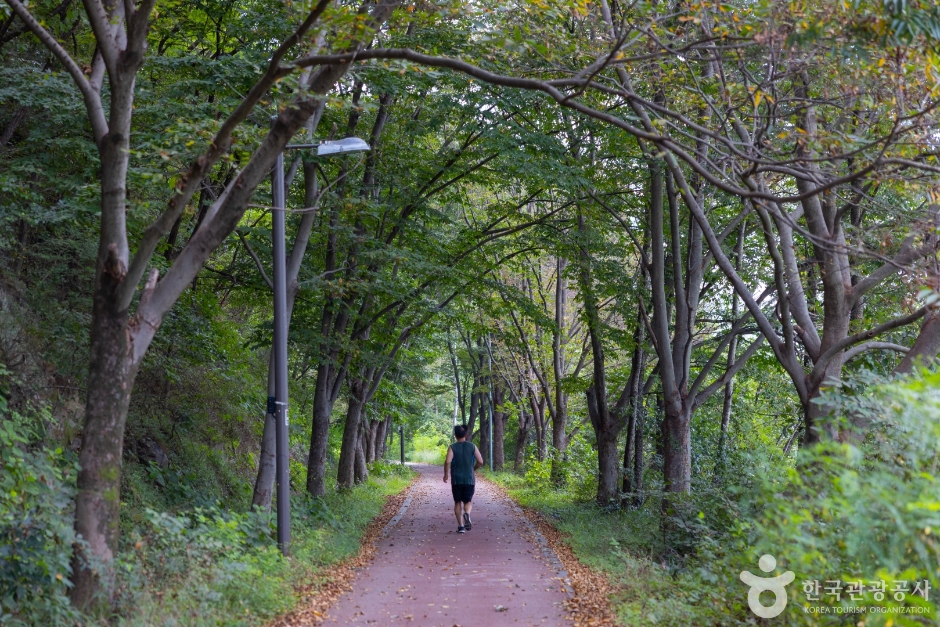


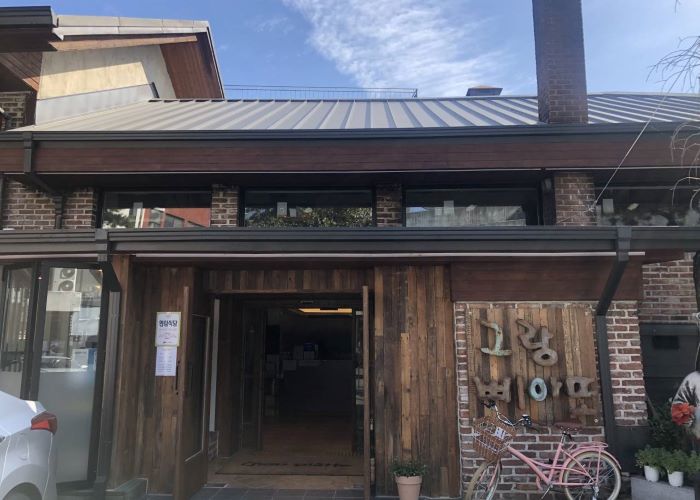

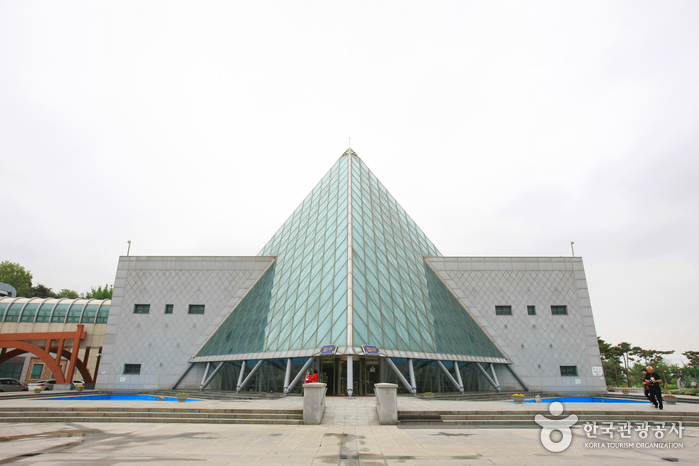
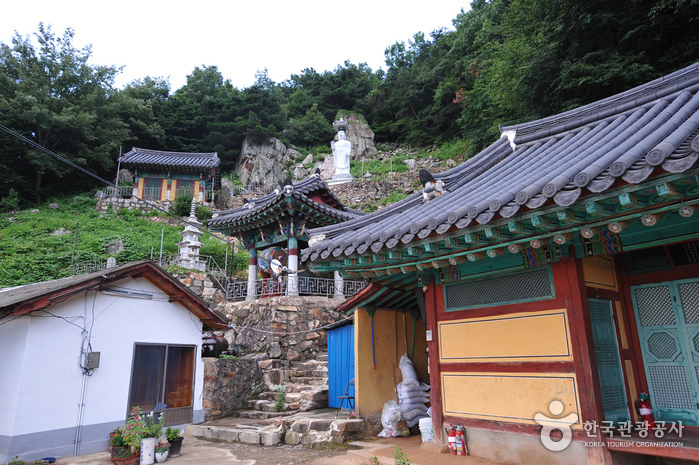
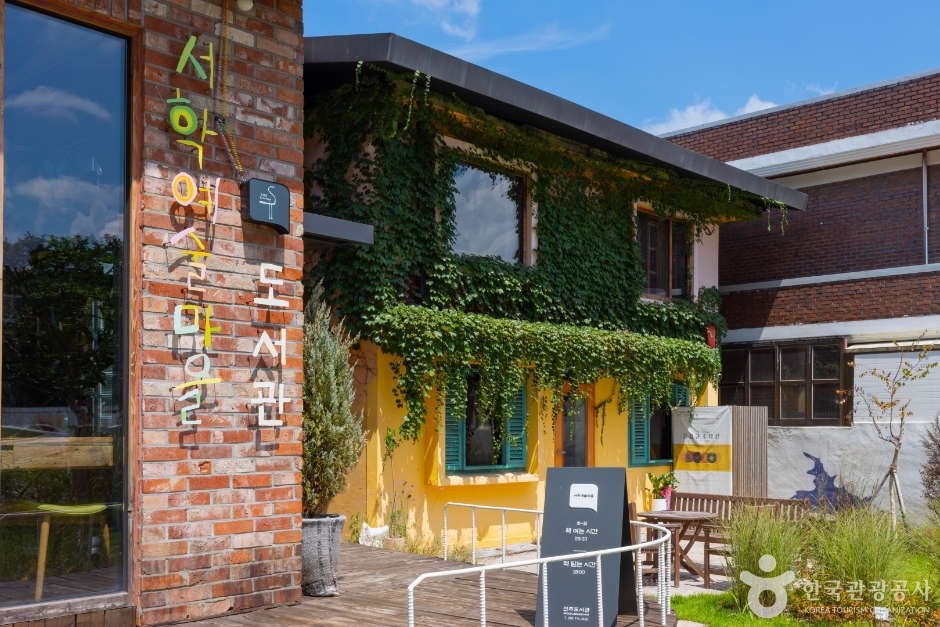
 Français
Français
 한국어
한국어 English
English 日本語
日本語 中文(简体)
中文(简体) Deutsch
Deutsch Español
Español Русский
Русский